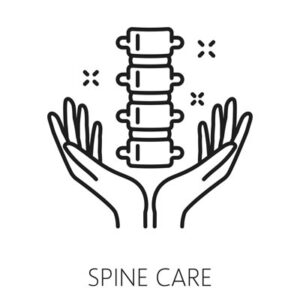Understanding sacroiliitis can be confusing, especially when wondering if it’s a type of arthritis. As someone familiar with chronic joint conditions, I can explain that sacroiliitis is inflammation in the sacroiliac joints, where the spine meets the pelvis. While it’s often grouped with arthritis due to similar symptoms – pain, stiffness, and inflammation – it’s technically distinct but related. Sacroiliitis is commonly associated with certain types of arthritis, like ankylosing spondylitis, but doesn’t always indicate arthritis itself. Knowing the difference helps find the proper treatment and understand the condition’s impact on mobility and quality of life.
What is Sacroiliitis?
As a doctor who’s treated numerous patients with sacroiliitis, I can tell you that this condition is indeed a type of inflammatory arthritis that affects the sacroiliac (SI) joints. Think of your SI joints as the connectors between your lower spine and pelvis – they’re like the foundation of your upper body’s support system.
When these joints become inflamed, we call it sacroiliitis. It’s like burning a fire where your lower back meets your hip bones. This inflammation can make simple activities like walking or even sitting feel like quite a challenge.
Types of Sacroiliitis
We typically see two main categories:
1. Infectious Sacroiliitis
- Caused by bacterial or fungal infections
- Usually develops rapidly
- Often accompanied by fever and severe pain
2. Inflammatory Sacroiliitis
Related to autoimmune conditions such as:
- Ankylosing spondylitis (most common)
- Psoriatic arthritis
- Inflammatory bowel disease-associated arthritis
- Reactive arthritis
Symptoms and Causes
Common Symptoms
The symptoms of sacroiliitis can be pretty sneaky – they often masquerade as general lower back pain. Here’s what you might experience:
Lower back pain that worsens with:
- Sitting for long periods
- Standing for extended periods
- Climbing stairs
- Running
Buttock pain (often on one side)
Morning stiffness that improves with movement
Limited range of motion in your lower back
Pain that radiates down your legs
What Causes Sacroiliitis?
Several factors can trigger sacroiliitis:
1. Infections
- Bacterial infections
- Fungal infections (less common)
2. Autoimmune Disorders
Particularly common in patients with HLA-B27 genetic marker
3. Trauma
- Falls or accidents
- Pregnancy and childbirth
- Sports injuries
See more: Sports Therapy: Enhancing Performance and Recovery
Diagnosis and Testing
The Diagnostic Journey
As a physician, I always start with a thorough medical history and physical examination. We’ll typically ask you to move in specific ways to help us identify the source of your pain.
Key Diagnostic Tests
We use several tools to confirm sacroiliitis:
Treatment and Management
Non-Surgical Options
Most patients respond well to conservative treatment approaches:
1. Physical Therapy
- Strengthening exercises
- Flexibility training
- Posture improvement
- Pain management techniques
2. Medications
- NSAIDs for pain and inflammation
- Corticosteroid injections
- Biologics for severe cases
When Surgery Becomes Necessary
In some cases, mainly when conservative treatments don’t provide relief, we might consider surgical options:
- Joint fusion
- SI joint stabilization
Living with Sacroiliitis
Managing sacroiliitis is like running a marathon, not a sprint. Here’s what helps my patients the most:
Lifestyle Modifications
*Exercise Smart
- Low-impact activities
- Swimming
- Gentle Yoga
- Regular stretching
* Mind Your Posture
- Use ergonomic chairs
- Take regular breaks from sitting
- Sleep on a supportive mattress
Alternative Therapies
Many of my patients find relief through the following:
- Acupuncture
- Gentle Yoga
- Tai chi
- Heat/cold therapy
Pregnancy and Sacroiliitis
For expectant mothers with sacroiliitis, pregnancy can present unique challenges. The extra weight and hormonal changes can increase SI joint pain, but we have several safe management strategies:
- Modified exercise routines
- Pregnancy-safe pain relief methods
- Supportive belts and devices
- Physical therapy specifically designed for pregnant women
At SpineWorks Chiropractic, we specialize in treating sacroiliitis and other spinal conditions. Our team of experts uses evidence-based approaches to help you manage your symptoms and improve your quality of life. Whether you’re dealing with recent onset pain or chronic sacroiliitis, we’re here to help you navigate your treatment journey.
As a doctor who’s treated countless patients with sacroiliitis, I understand how challenging this condition can be. Remember, while sacroiliitis is a type of inflammatory arthritis, it’s manageable with the right approach and support. Don’t hesitate to contact healthcare providers who can help you develop a personalized treatment plan.
Would you like to learn more about specific aspects of sacroiliitis or discuss treatment options in detail? Feel free to ask questions in the comments below or schedule a consultation with our team.
Frequently Asked Questions
What are the specific autoimmune conditions that can cause inflammatory sacroiliitis?
Ankylosing spondylitis is the most common autoimmune condition associated with inflammatory sacroiliitis. Other conditions include psoriatic arthritis, inflammatory bowel disease-associated arthritis, and reactive arthritis.
How can sacroiliitis affect my daily life?
Sacroiliitis can significantly impact daily activities, causing pain, stiffness, and difficulty with movement. It may limit your ability to walk, sit, or stand for prolonged periods.
What is the psychological impact of living with sacroiliitis?
Living with a chronic condition like sacroiliitis can lead to emotional distress, including anxiety, depression, and frustration. It’s essential to seek support from healthcare professionals and support groups to manage these challenges.
Are there any alternative therapies that can help manage sacroiliitis?
While more research is needed, some people with sacroiliitis have found relief through alternative treatments such as acupuncture, yoga, and tai chi. These therapies may reduce pain and improve flexibility.
How can sacroiliitis affect pregnancy and childbirth?
Sacroiliitis during pregnancy can lead to increased back pain and discomfort. In some cases, it may affect the birthing process. Discussing your condition with your healthcare provider to develop a safe birthing plan is crucial.






